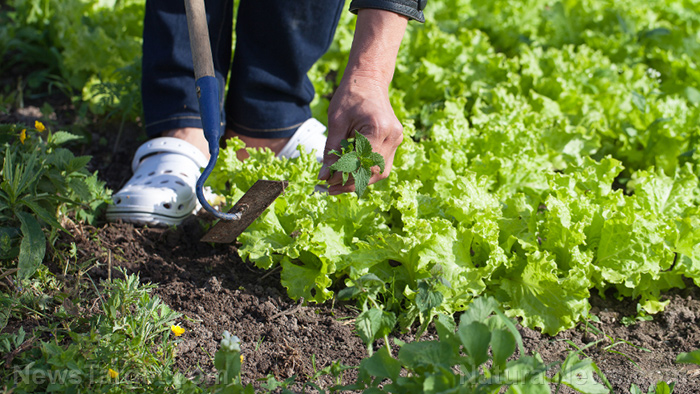
University of California Davis (UC Davis) researcher Steven Fennimore reports that robots are going from curiosity to necessity for farmers who cultivate certain vegetables like broccoli, lettuce, onions, and tomatoes. These specialty crops are not produced in bulk like, say, corn or soybeans.
Fennimore cites two matters that make robotic weeders very attractive when it comes to tending specialty crop fields. First, there are no herbicides tailored for use with these particular crops. The weeds in fields of those crops need to be removed by hand, which means the farmer has to hire laborers.
Second, the cost of hand-weeding is skyrocketing. The bigger the crop field, the more people are needed to weed it. Human weeders take a lot of time time to go through a field, and their services also cost a lot of money.
Farmers can spend $150 to $300 on each acre that requires weeding. The heavy costs of hand-weeding have driven some farmers into robotic arms, says Fennimore. (Related: Robot with advanced cyber-hand put to work harvesting cauliflower for the EU.)
Robotic weeders cannot tell the difference between lettuce and weeds right now
A robotic weeder uses small blades to rip weeds out of the ground. The size and retractable ability of the weeding blades prevent any damage to the expensive crops.
An extension specialist at UC Davis, Fennimore has spent the last 10 years engineering and testing robotic weeders alongside university researchers and companies. He says the technology has just entered commercial use and has lots of room for improvement.
For example, the robots' programming can spot patterns and differentiate the plant from the soil. However, the weeders are still unable to distinguish between an annoying weed and a head of lettuce, which look nothing alike.
Some companies are putting their robotic weeders through training so they can figure out the difference between weeds and crops. Fennimore himself is lending his expertise to develop a way to mark crop plants so that the weeders know better than to uproot it.
"The rows have to be a little straighter, cleaner, and more consistent because the machines aren’t that sophisticated yet. The robots don’t like surprises,” he admits.
European farmers switched to robotic weeders due to labor costs and incentives for organic farming
Some California farmers are beginning to think that shelling out anywhere from $120,000 to $175,000 for a robot is a bargain in the long run. Others are balking at the cost and preferring to stick with the tried-and-tested method of weeding by hand, at least until the robotic weeder gets smarter and cheaper at the job.
Their counterparts across the Atlantic are less shy about paying the up-front cost. The European Union has both higher labor costs and many incentives for organic farming that uses minimal or no pesticides. A growing number of European specialty crop growers have already made the switch to robotic weeders.
As for Fennimore, he's investigating the unique challenges posed by other specialty crops. Onions, for example, are very different from lettuce, so a robotic weeder needs a different approach for an onion field.
Fennimore is a firm believer in roboticization of the physical weeding process, especially compared to herbicides. He said robots are much more flexible and can be updated much more easily than chemical-based weed control methods.
Find out what the next job for robots is at Robotics.news.
Sources include:
Please contact us for more information.






















